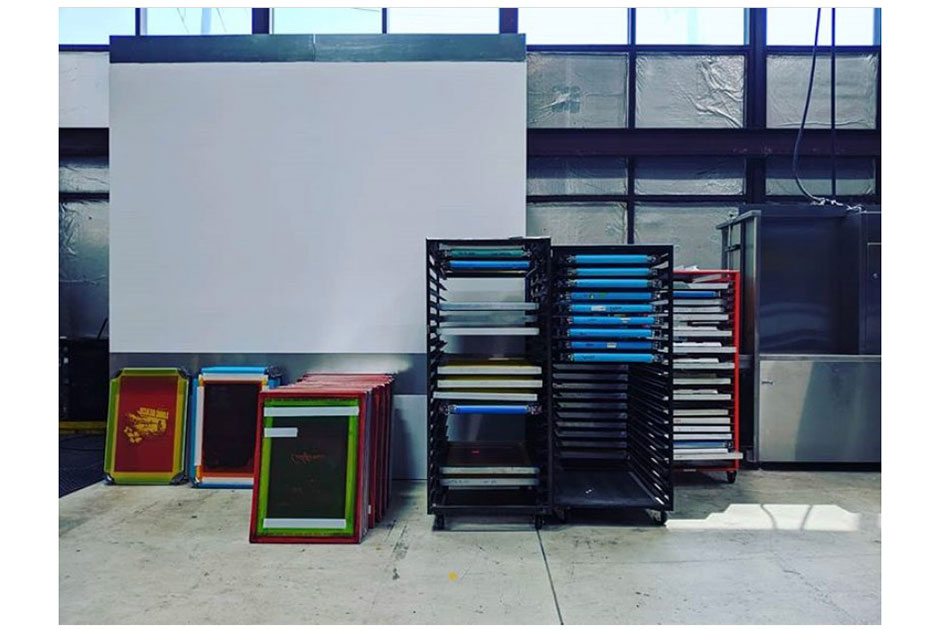As I’ve developed Printavo’s simple shop management software, I’ve visited dozens of print shops across the world. Every single shop has creative people crafting unique solutions to common problems.
But whether a shop is large, small, growing, or content with their niche – truly successful print shops have one thing in common. They’ve developed powerful systems for organizing a complicated custom printing process.
Communication and Preparation
Communication and preparation begin with good sales.
Your salespeople are the first line of defense against disorganization. If they sell jobs your team can print smoothly, organization is much easier. Arm sales staff with knowledge, resources, and training that are similar to what you’d provide for your production staff. Your sales team is part of your production team!
Clear work orders are the next mission critical component for staying organized. The shops with the best work orders capture every last detail. The press operator could print the job in a vacuum!
What should be in a work order? At the very least:
• Pantone colors
• Exact inks and effects to be used
• Process details (i.e. discharge underbase, screen mesh)
• Curing dryer settings (if applicable)
• Who sold the job and who will print it
• A mockup of the finished product
• Sizes, colors, garments
• Quantities and customizations
• Due dates
• All essential details for success
Standardization is the final step toward an organized shop. Your process is less efficient when customers or your production team stop to ask clarifying questions. No one should ask what happens next. Autonomous employees aren’t just more productive. They’re happier and will stay in your business longer.
To achieve this, standardize your shop’s vocabulary, refine your tools and workflow, and publicly communicate about your overall process. Toyota’s legendary Toyota Production System is a big source of inspiration here: “Standardized tasks are the foundation for continuous improvement and employee empowerment.”
Get Rid of Clutter
Clutter and disorganization lead to waste. The most successful print shops aren’t spotless. But they are extremely organized around their printing process.
Here are some ideas for eliminating clutter and waste:
• Remove anything that impedes movement through your shop. Can you freely walk through the shop without needing to dodge carts, presses, furniture, etc.?
• Assign stations to each part of your process. An ink station shouldn’t have emulsion and squeegees, too. Staff must not impede or crowd each other during routine tasks.
• Waste no space. Arrange your shop so that minimal movement is required. Ten steps here and there may seem small – but over a year it adds up to hours of lost time. The most effective layout for stations is typically a U-shape, with the worker in the middle and all tools within reach.
• Everything in its place. Some shops take this to the next level by meticulously labeling everything in their shop and assigning it a space. While you don’t need to rush out and buy a label maker, take stock of the ten most commonly used tools in your shop and see if you can’t create a permanent, easily accessible, and sensible place for them.
• Use lanes, labels, and tape markings. Ever realized that highway lanes are nothing more than paint? Tape on your floor can organize the flow of movement through your shop just like paint on a highway organizes traffic. Some shops even label the floor of their shipping area – just delivered, ready to print, ready to ship, and so on.
• Create a “clean side” and a “dirty side” of your shop. This is an incredible tip: have one side of your shop dedicated to clean things and the other dedicated to dirty things – and never mix the two. I’ve even seen print shops store garments in the same room as ink…with a thick tape line separating the two sides of the room.
Schedule It (Or It Won’t Happen)
But how do you actually keep your shop organized? The answer is really simple. You have to schedule recurring cleaning and maintenance…or it just won’t happen.
I suggest setting aside half an hour on Fridays for cleaning, equipment maintenance, and general organization tasks that get lost in the day-to-day chaos. Otherwise, cleaning and maintenance tasks are easily forgotten in favor of more “valuable” activities. Take it a step further with a monthly meeting to discuss what is and isn’t working and reflect on how to get better.
But have no doubts: in the long run, a clean and organized print shop is a much happier and more productive business.
Finally, if you’re struggling to eliminate waste or figure out how to improve your shop’s organization, go straight to the source and ask your production team the following questions:
• What annoys you about our current organization?
• What could be improved easily?
• What takes too long to do right now?
• What do you need to do your job better?
Focus on clear communication and coherent standards. Then, improve your process with a streamlined and clutter-free shop. Finally, create a recurring schedule for cleaning, maintenance, and reflection.
Organization is part of an ongoing process of improvement. The best shops take organization seriously – and thoughtfully seize every opportunity to get better at what they do.
Bruce Ackerman is the founder of Printavo a cloud-based management tool for print, embroidery and sign shops.





